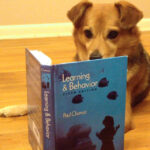Barks Blog
A Little Truth in Advertising, Please
Can a dog trainer advertise that they’re “force-free” and then strap a shock collar on your dog? Surprisingly, they can — and some do. This puts dog owners in a bad place if you believe positive training is the only acceptable way to help your furry friend learn your rules. How do you wade through the sometimes outrageous claims dog trainers make? What red flags do you look for?

First, realize that dog training is an unregulated industry. Doctors, lawyers, big rig drivers, hair dressers and nail technicians all have to meet specific government standards before opening shop. Various associations give their stamp of approval to trainers, but the Pet Professional Guild (PPG) is the only organization that rigorously screens trainers for force-free techniques and ensures that their training procedures stick to the principle of “do no harm” before it will recommend one to pet owners. With the PPG, what you see is what you get.
You’ll next need to pin trainers down on exactly what they mean when they say “force-free.” Because words and phrases can be such slippery things. What the PPG means by “force-free” is that the trainer will never use coercion, physical repositioning, fear, or pain on a dog who makes a mistake. They will reward the dog for getting the lesson right. Choosing a trainer listed by the PPG means there are no “electronic” collars, no choking, no “flooding” or jerking the dog around by neck.
Force-free is a philosophy, not an ad slogan. Mixing any other training style with positive training is like your neighborhood vegetarian cafe adding an all-you-can-eat steak night on Thursdays to boost traffic. It’s simply incompatible.
Some trainers boast that their training is “balanced,” unlike what those cookie-slinging clicker trainers do. This implies that training your dog without pain is… an extreme approach? It suggests that if you train your dog positively, she’s off-kilter and lacking something. She is. She’s lacking the urge to run and hide every time you bring the leash out. Force-free training is every bit as effective as punishment-based techniques. Positive training is used successfully in agility, dock diving, lure coursing and obedience. Positive training is used in bomb and drug dog training, police work and in creating military war dogs. It produces dogs who are confident, who think, who aren’t afraid to try new things and — most importantly — who aren’t afraid of you, their companion and protector.
Does a trainer offer a 100 per cent guarantee? Then look out, because there are no guarantees in training. Dogs are complex individuals and every home situation is complicated. Some behavioral problems are due to physical problems or genetics. Some are entrenched from years of repetition. Some owners — and everyone else who lives in the dog’s home — may not understand the importance of sticking strictly to the training regimen around the clock even when the trainer is not present. A trainer who guarantees results is a trainer prepared to use whatever means necessary at whatever the cost to you and your dog. Pain does get results. You often get bonus results, too — fear, aggression, physical damage and a pet who doesn’t much like you anymore.
 When a trainer says her techniques will work on your dog because they’re based on the science of wolf pack behavior, tell her no thanks. Your dog isn’t a wolf. Dogs stopped being wolves tens of thousands of years ago. Explain that you’re going to keep looking for a trainer because dogs are not pack animals. If you have a houseful of dogs, you have a gang, a swarm, a family with lot of dogs. But you do not have a wolf pack. She’s trying to sell you the dominance theory, which holds that your dog is hard-wired to fight her way to the top of the pack. Show little Fifi any weakness whatsoever and she’ll instinctively move to take over your home and family. Fifi is a wolf in poodle clothing. If you ever let her sleep on your bed, you’re in deep trouble. Don’t let her go through a door before you. In no way should she ever eat before you. Be the pack leader. Make Fifi respect you.
When a trainer says her techniques will work on your dog because they’re based on the science of wolf pack behavior, tell her no thanks. Your dog isn’t a wolf. Dogs stopped being wolves tens of thousands of years ago. Explain that you’re going to keep looking for a trainer because dogs are not pack animals. If you have a houseful of dogs, you have a gang, a swarm, a family with lot of dogs. But you do not have a wolf pack. She’s trying to sell you the dominance theory, which holds that your dog is hard-wired to fight her way to the top of the pack. Show little Fifi any weakness whatsoever and she’ll instinctively move to take over your home and family. Fifi is a wolf in poodle clothing. If you ever let her sleep on your bed, you’re in deep trouble. Don’t let her go through a door before you. In no way should she ever eat before you. Be the pack leader. Make Fifi respect you.
Sounds a little silly, doesn’t it. The dominance theory doesn’t even apply to wolves. It’s been debunked. Yet terms like “alpha dog” and the flawed thinking the theory produce are still rife in the dog training industry. Being “top dog” in the house appeals very much to some people, but it’s not especially popular with the dogs who are being kicked, jerked, screamed at or otherwise abused due to a fallacious theory that’s long out of date.
Finally, if a trainer claims to be force-free, look at the training tools they use. Shock or “e-collars,” choke chains and prong collars are a sure sign that the trainer may be just a bit hazy on the notion of “force-free.” They all get your dog’s attention by causing pain. Put yourself in your dog’s place. If someone holds out a piece of candy and then hits you over the head with a stick, you’d call them mean. You might question their sanity. But you certainly wouldn’t say they’re honest. Keep your dog’s trust. Make sure that if you ask for positive, force-free training, that’s what you get.
